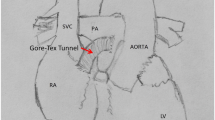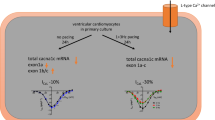Abstract
Objective. In patients with persistent atrial fibrillation (AF), the atrial myocardium is characterized by a reduced contractile force, by a shortened duration of the action potential and a recently demonstrated reduction of the L-type Ca2+ currents. We analyzed potential effects on L-type Ca2+ currents of the patients' medication and of the duration of AF. Methods and results. Human atrial myocytes were prepared from the right auricles of patients undergoing open-heart surgery. Three groups of patients were studied: a control group with sinus rhythm (SR, n = 26 patients) and a group with persistent AF (> 3 months duration; n = 10), a group with non-persistent AF (3 patients with SR but with documented episodes of AF in their history). L-type Ca2+ currents were measured during depolarizing pulses from a holding potential of −70mV to a test potential of +10mV and are given as mean ±SEM of current densities (currents normalized to the cell capacitance). Ca2+ current densities were significantly (p < 0.0001) smaller in cells from patients with persistent AF than in control cells (0.54 ± 0.08 pA/pF vs. 1.96 ± 0.12 pA/pF). No indication was found that these changes were caused by medication with Ca2+ channel antagonists, β blockers, or digitalis. Stimulation with the dihydropyridine Bay K 8644 (1 μM) or with isoproterenol (0.1 μM) increased Ca2+ currents in control cells 3.5 ± 0.2 and 3.5 ± 0.3-fold. In persistent AF, this increase was significantly larger (6.0 ± 0.5 and 5.2 ± 0.6-fold) but stimulated currents were still significantly lower than in control cells. Patients with non-persistent AF exhibited Ca2+ currents well within the control range. Conclusion. A reduction in Ca2+ currents, due to a reduction in number as well as a depression of L-type channels, is a characteristic and pathophysiologically important part of the myocardial remodeling during long-lasting atrial fibrillation. It is not present in patients with non-persistent AF and not caused by medication.
Similar content being viewed by others

Author information
Authors and Affiliations
Additional information
Received: 27 September 2000, Returned for revision: 9 October 2000, Revision received: 8 November 2000, Accepted: 9 November 2000
Rights and permissions
About this article
Cite this article
Skasa, M., Jüngling, E., Picht, E. et al. L-type calcium currents in atrial myocytes from patients with persistent and non-persistent atrial fibrillation. Basic Res Cardiol 96, 151–159 (2001). https://doi.org/10.1007/s003950170065
Issue Date:
DOI: https://doi.org/10.1007/s003950170065



